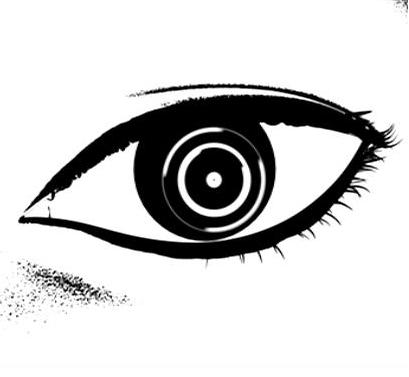EYES
THE SHINING
The Shining is a film that manipulates reality by emphasising the existence of “the shining”: a psychic ability in which characters can see things in the future or the past, such as the ghosts of murdered people in the hotel. As well as showing the characters fear and other emotion the director, Stanley Kubrik uses shots of eyes extensively throughout the film to show the character’s experiencing ‘the shining’. As this is a psychic ability, the use of eyes in filming is very effective.
The two characters in the film that have the psychic ability of ‘the shining’ are Jack’s son Danny and the hotel chef. In order to show these character’s experiencing ‘the shining’ during the film Kubrik uses a series of shots that zoom in on the character’s eyes showing pupil dilation, a clear sign of fear. As the film progresses these shots are mixed with quick shots of what is causing the character to feel such intense fear. As these are only quick shots that are increased in number and duration the audience gains a feeling of the characters fear and a curiosity of what they must be seeing which is not revealed until the end of the movie. Hence, the characters eyes are a key component when communicating this intense fear to the audience.
The first scene in the film in which this particular shot of eyes is used is when Danny is in the bathroom of their house and looking in the mirror talking to his imaginary friend ‘Tony’ who represents ‘the shining’. In this scene the audience only experiences the horror on Danny’s face as the shots repeatedly zoom in on Danny’s eyes. As this is one of the first scenes in the film there is no shot of what Danny is seeing, hence this first initialises the audiences curiosity. Also Danny’s enlarged pupils and wide eyes portrays fear and a sense of dread about what Danny is about to experience, effectively transferring this fear to the audience.








